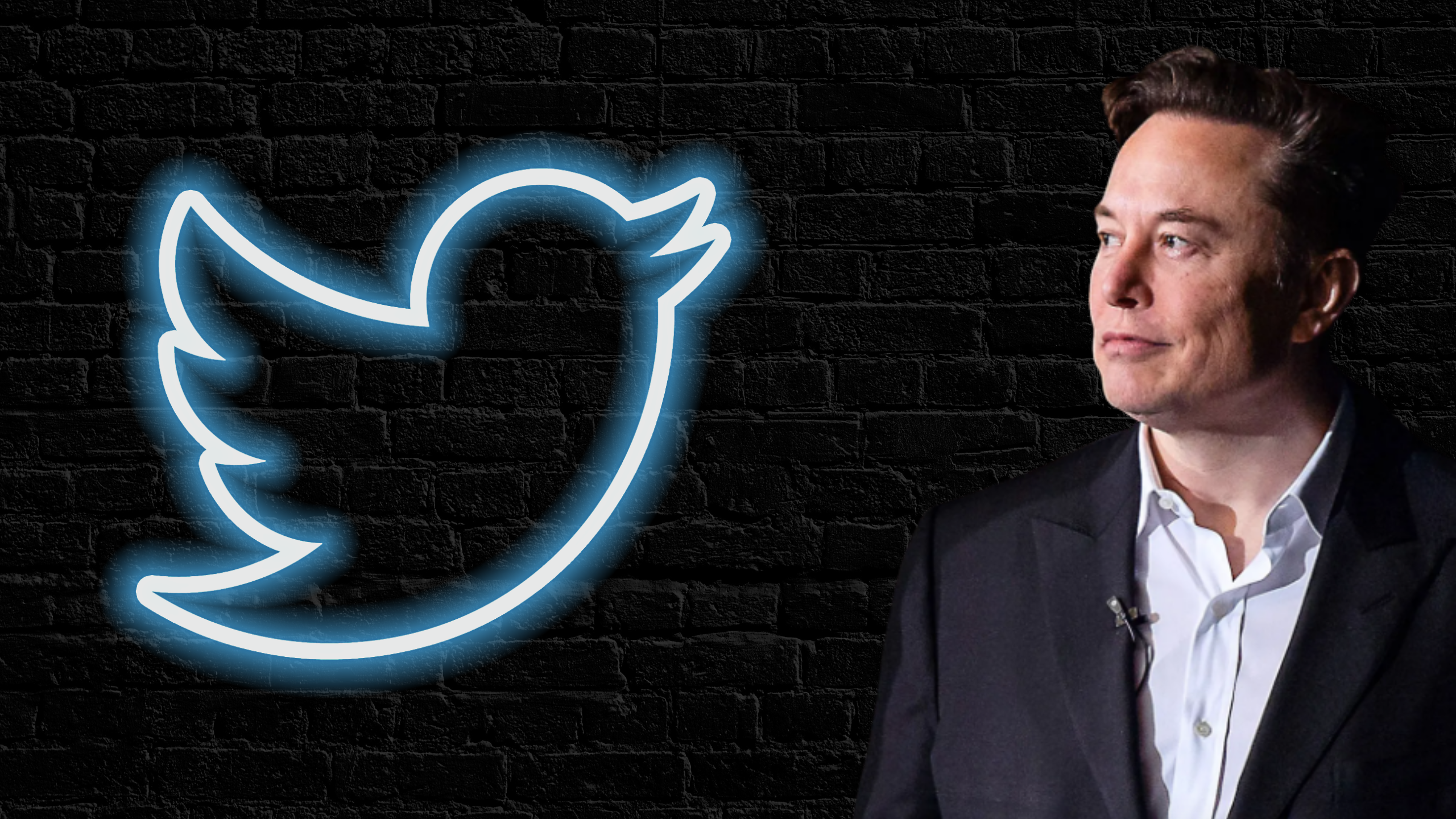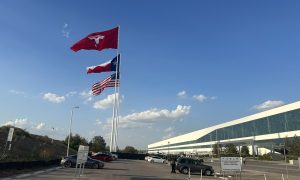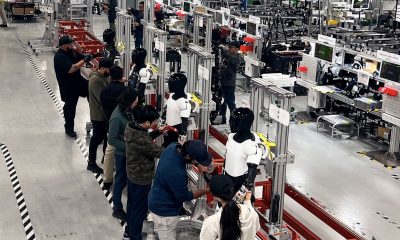Following the acquisition of Twitter by Elon Musk, many companies have paused or stopped their advertising campaigns. A report from Media Matters for America said that over half of Twitter’s top 100 advertisers are no longer advertising on the platform.
In September, Twitter promoted ads alongside child pornography. Some of the brands called Twitter out on this and either paused or suspended their ad campaigns.
Some advertisers that were not affected by Twitter’s accidental promotion of ads with child pornography continued to advertise with the platform. And some of these brands who did so paused their campaigns when Elon Musk took over.
A key issue is that in the past, Twitter has been lenient toward child predators, yet advertisers have been advertising with the platform for many years.
It wasn’t until Elon Musk bought the platform that Twitter made removing child sexual exploitation material priority number one. Some of these advertisers are only now pausing or suspending their ad campaigns after Elon Musk took over.
Removing child exploitation is priority #1. Please reply in comments if you see anything that Twitter needs to address.
— Elon Musk (@elonmusk) November 24, 2022
A Twitter spokesperson said that the platform “has zero tolerance for child sexual exploitation,” but there is a case where the platform refused to remove videos of two children being abused, and it took the U.S. Department of Homeland Security to step in for Twitter to remove the content.
The Media Matters report stated that Elon Musk “has continued his rash of brand unsafe actions — including amplifying conspiracy theories, unilaterally reinstating banned accounts such as that of former President Donald Trump, courting and engaging with far-right accounts, and instituting a haphazard verification scheme that allowed extremists and scammers to purchase a blue check. This last move, in particular, opened the platform up to various fraud and brand imitations.”
There was no mention of Twitter’s new priority number one, which is the removal of child pornography from its platform. Additionally, many of these brands continued to advertise while Trump was president and active on the platform.
Comparison.
The two following lists show companies that stopped advertising when Elon Musk took over and companies whose ads were published alongside explicit and illegal content.
Companies That Stopped Publishing Ads When Elon Musk Bought Twitter:
- Abbott Laboratories
- Allstate Corporation
- AMC Networks
- American Express Company
- AT&T
- Big Heart Petcare
- BlackRock, Inc.
- BlueTriton Brands, Inc.
- Boston Beer Company
- CA Lottery (California State Lottery)
- CenturyLink (Lumen Technologies, Inc.)
- Chanel
- Chevrolet
- Chipotle Mexican Grill, Inc.
- Citigroup, Inc.
- CNN
- Dell
- Diageo
- DirecTV
- Discover Financial Services
- Fidelity
- First National Realty Partners
- Ford
- Heineken N.V.
- Hewlett-Packard (HP)
- Hilton Worldwide
- Inspire Brands, Inc.
- Jeep
- Kellogg Company
- Kohl’s Department Stores, Inc.
- Kyndryl
- LinkedIn Corporation
- MailChimp (The Rocket Science Group)
- Marriott International, Inc.
- Mars Petcare
- Mars, Incorporated
- Merck & Co. (Merck Sharp & Dohme MSD)*
- Meta Platforms, Inc. (formerly Facebook, Inc.)
- MoneyWise (Wise Publishing, Inc.)
- Nestle
- Novartis AG
- Pernod Ricard
- PlayPass
- The Coca-Cola Company
- The Kraft Heinz Company
- Tire Rack
- Verizon
- Wells Fargo
- Whole Foods Market IP
- Yum! Brands
Brands whose ads Twitter promoted alongside CSE Content.
There were over 30 brands affected, and the following list is just some of the brands that were reported to be affected.
- Dyson
- Mazda
- Forbes
- Walt Disney
- NBC Universal
- Coca-Cola
- Cole Haan
- a children’s hospital
- PBS Kids
A spokesperson for both Disney and Coca-Cola spoke out against Twitter promoting their ads alongside the CSE content, yet NBCUniversal confirmed that it asked Twitter to remove the ads associated with the content.
David Maddocks, brand president at Cole Haan, told Reuters that either Twitter fixes this or Cole Haan would do so, including by not buying Twitter ads. Mazda USA also said it would be prohibiting its ads from appearing on Twitter profile pages.
Although a handful of brands were upset over Twitter’s promoting ads along CSE, many of those brands that quit Twitter following Elon Musk’s acquisition were advertising up until recently. This includes both brands who had their content promoted alongside child pornography as well as those who didn’t.
For all of these brands who continued to advertise despite Twitter’s problem with CSE, the question remains: is advertising with Elon Musk worse than alongside the exploitation of children?
This is a question Eliza Bleu had for General Motors when the automaker first suspended its campaign after Elon Musk’s acquisition of the platform. Bleu is one of Twitter’s toughest critics who, up until recently, Twitter ignored. Elon Musk agrees with Bleu that CSE should be removed from the platform and has made it priority number one.
I would like to know too
— Elon Musk (@elonmusk) November 23, 2022
“Twitter has a long history of knowingly refusing to remove child sexual abuse material at scale. This issue has been covered by the corporate media and called out by governments around the globe.”
“Over 32 brands removed ads from Twitter when the Reuters pieces came out in September of this year because of child sexual abuse material on Twitter. I think that General Motors’ lack of concern over sexually abused children says a lot. Survivors buy cars too. There are more survivors out there than these brands might think,” Bleu told Teslarati in October.
Bleu told Teslarati on Sunday that these brands only care about the world’s most vulnerable when it is politically advantageous.
“Where was the outrage, pearl-clutching, and solidarity for the minor survivors sexually exploited on Twitter over the past 10+ years?”
“These brands only care about the world’s most vulnerable when it’s politically advantageous. They only care about the vulnerable populations who buy products, vote, and have money. It’s manipulative and gaslighting.”
“Thank you to the brands who took a stand against Twitter in September over this very real crime. My hope is that under the new leadership, the platform will continue to prioritize the removal of child sexual exploitation, and the brands that left in September can return knowing that specific issue will not negatively impact their brand as well as children around the globe.”
The question remains: Which is worse for Twitter advertisers: child sexual exploitation or Elon Musk?
Your feedback is welcome. If you have any comments or concerns or see a typo, you can email me at johnna@teslarati.com. You can also reach me on Twitter at @JohnnaCrider1.
Teslarati is now on TikTok. Follow us for interactive news & more. Teslarati is now on TikTok. Follow us for interactive news & more. You can also follow Teslarati on LinkedIn, Twitter, Instagram, and Facebook.
Elon Musk
Tesla investors will be shocked by Jim Cramer’s latest assessment
Jim Cramer is now speaking positively about Tesla, especially in terms of its Robotaxi performance and its perception as a company.

Tesla investors will be shocked by analyst Jim Cramer’s latest assessment of the company.
When it comes to Tesla analysts, many of them are consistent. The bulls usually stay the bulls, and the bears usually stay the bears. The notable analysts on each side are Dan Ives and Adam Jonas for the bulls, and Gordon Johnson for the bears.
Jim Cramer is one analyst who does not necessarily fit this mold. Cramer, who hosts CNBC’s Mad Money, has switched his opinion on Tesla stock (NASDAQ: TSLA) many times.
He has been bullish, like he was when he said the stock was a “sleeping giant” two years ago, and he has been bearish, like he was when he said there was “nothing magnificent” about the company just a few months ago.
Now, he is back to being a bull.
Cramer’s comments were related to two key points: how NVIDIA CEO Jensen Huang describes Tesla after working closely with the Company through their transactions, and how it is not a car company, as well as the recent launch of the Robotaxi fleet.
Jensen Huang’s Tesla Narrative
Cramer says that the narrative on quarterly and annual deliveries is overblown, and those who continue to worry about Tesla’s performance on that metric are misled.
“It’s not a car company,” he said.
He went on to say that people like Huang speak highly of Tesla, and that should be enough to deter any true skepticism:
“I believe what Musk says cause Musk is working with Jensen and Jensen’s telling me what’s happening on the other side is pretty amazing.”
Tesla self-driving development gets huge compliment from NVIDIA CEO
Robotaxi Launch
Many media outlets are being extremely negative regarding the early rollout of Tesla’s Robotaxi platform in Austin, Texas.
There have been a handful of small issues, but nothing significant. Cramer says that humans make mistakes in vehicles too, yet, when Tesla’s test phase of the Robotaxi does it, it’s front page news and needs to be magnified.
He said:
“Look, I mean, drivers make mistakes all the time. Why should we hold Tesla to a standard where there can be no mistakes?”
It’s refreshing to hear Cramer speak logically about the Robotaxi fleet, as Tesla has taken every measure to ensure there are no mishaps. There are safety monitors in the passenger seat, and the area of travel is limited, confined to a small number of people.
Tesla is still improving and hopes to remove teleoperators and safety monitors slowly, as CEO Elon Musk said more freedom could be granted within one or two months.
News
Tesla launches ultra-fast V4 Superchargers in China for the first time
Tesla has V4 Superchargers rolling out in China for the first time.

Tesla already has nearly 12,000 Supercharger piles across mainland China. However, the company just initiated the rollout of the ultra-fast V4 Superchargers in China for the first time, bringing its quick-charging piles to the country for the first time since their launch last year.
The first batch of V4 Superchargers is now officially up and running in China, the company announced in a post on Chinese social media outlet Weibo today.
The company said in the post:
“The first batch of Tesla V4 Superchargers are online. Covering more service areas, high-speed charging is more convenient, and six-layer powerful protection such as rain and waterproof makes charging very safe. Simultaneously open to non-Tesla vehicles, and other brands of vehicles can also be charged. There are more than 70,000 Tesla Superchargers worldwide. The charging network layout covers 100% of the provincial capitals and municipalities in mainland China. More V4 Superchargers will be put into use across the country. Optimize the charging experience and improve energy replenishment efficiency. Tesla will accompany you to the mountains, rivers, lakes, and seas with pure electricity!”
The first V4 Superchargers Tesla installed in China are available in four cities across the country: Shanghai, Zhejiang, Gansu, and Chongqing.

Credit: Tesla China
Tesla has over 70,000 Superchargers worldwide. It is the most expansive and robust EV charging network in the world. It’s the main reason why so many companies have chosen to adopt Tesla’s charging connector in North America and Europe.
In China, some EVs can use Tesla Superchargers as well.
The V4 Supercharger is capable of charging vehicles at speeds of up to 325kW for vehicles in North America. This equates to over 1,000 miles per hour of charging.
Elon Musk
Elon Musk hints at when Tesla could reduce Safety Monitors from Robotaxi
Tesla could be reducing Safety Monitors from Robotaxi within ‘a month or two,’ CEO Elon Musk says.

Elon Musk hinted at when Tesla could begin reducing Safety Monitors from its Robotaxis. Safety Monitors are Tesla employees who sit in the front passenger seat during the driverless rides, and are there to ensure safety for occupants during the earliest rides.
Tesla launched its Robotaxi fleet in Austin last Sunday, and after eight days, videos and reviews from those who have ridden in the driverless vehicles have shown that the suite is safe, accurate, and well coordinated. However, there have been a few hiccups, but nothing that has put anyone’s safety in danger.
A vast majority — close to all of the rides — at least according to those who have ridden in the Robotaxi, have been performed without any real need for human intervention. We reported on what was the first intervention last week, as a Safety Monitor had to step in and stop the vehicle in a strange interaction with a UPS truck.
Watch the first true Tesla Robotaxi intervention by safety monitor
The Tesla and UPS delivery truck were going for the same street parking space, and the Tesla began to turn into it. The UPS driver parallel parked into the spot, which was much smaller than his truck. It seemed to be more of an instance of human error instead of the Robotaxi making the wrong move. This is something that the driverless cars will have to deal with because humans are aggressive and sometimes make moves they should not.
The Safety Monitors have not been too active in the vehicles. After all, we’ve only seen that single instance of an intervention. There was also an issue with the sun, when the Tesla braked abnormally due to the glare, but this was an instance where the car handled the scenario and proceeded normally.
With the Robotaxi fleet operating impressively, some are wondering when Tesla will begin scaling back both the Safety Monitors and Teleoperators that it is using to ensure safety with these early rides.
CEO Elon Musk answered the inquiry by stating, “As soon as we feel it is safe to do so. Probably within a month or two.”
As soon as we feel it is safe to do so.
Probably within a month or two. We continue to improve the Tesla AI with each mile driven.
— Elon Musk (@elonmusk) June 30, 2025
Musk’s response seems to confirm that there will be fewer Teleoperators and Safety Monitors in the coming months, but there will still be some within the fleet to ensure safety. Eventually, that number will get to zero.
Reaching a point where Tesla’s Robotaxi is driverless will be another significant milestone for the company and its path to fully autonomous ride-sharing.
Eventually, Tesla will roll out these capabilities to consumer-owned vehicles, offering them a path to generate revenue as their car operates autonomously and completes rides.
For now, Tesla is focusing on perfecting the area of Austin where it is currently offering driverless rides for just $4.20 to a small group of people.
-

 News5 days ago
News5 days agoTesla Robotaxi’s biggest challenge seems to be this one thing
-

 News2 weeks ago
News2 weeks agoTesla confirms massive hardware change for autonomy improvement
-

 Elon Musk2 weeks ago
Elon Musk2 weeks agoElon Musk slams Bloomberg’s shocking xAI cash burn claims
-

 News2 weeks ago
News2 weeks agoTesla features used to flunk 16-year-old’s driver license test
-

 News2 weeks ago
News2 weeks agoTesla China roars back with highest vehicle registrations this Q2 so far
-

 News2 weeks ago
News2 weeks agoTexas lawmakers urge Tesla to delay Austin robotaxi launch to September
-

 News2 weeks ago
News2 weeks agoTesla dominates Cars.com’s Made in America Index with clean sweep
-

 News2 weeks ago
News2 weeks agoTesla’s Grok integration will be more realistic with this cool feature



















